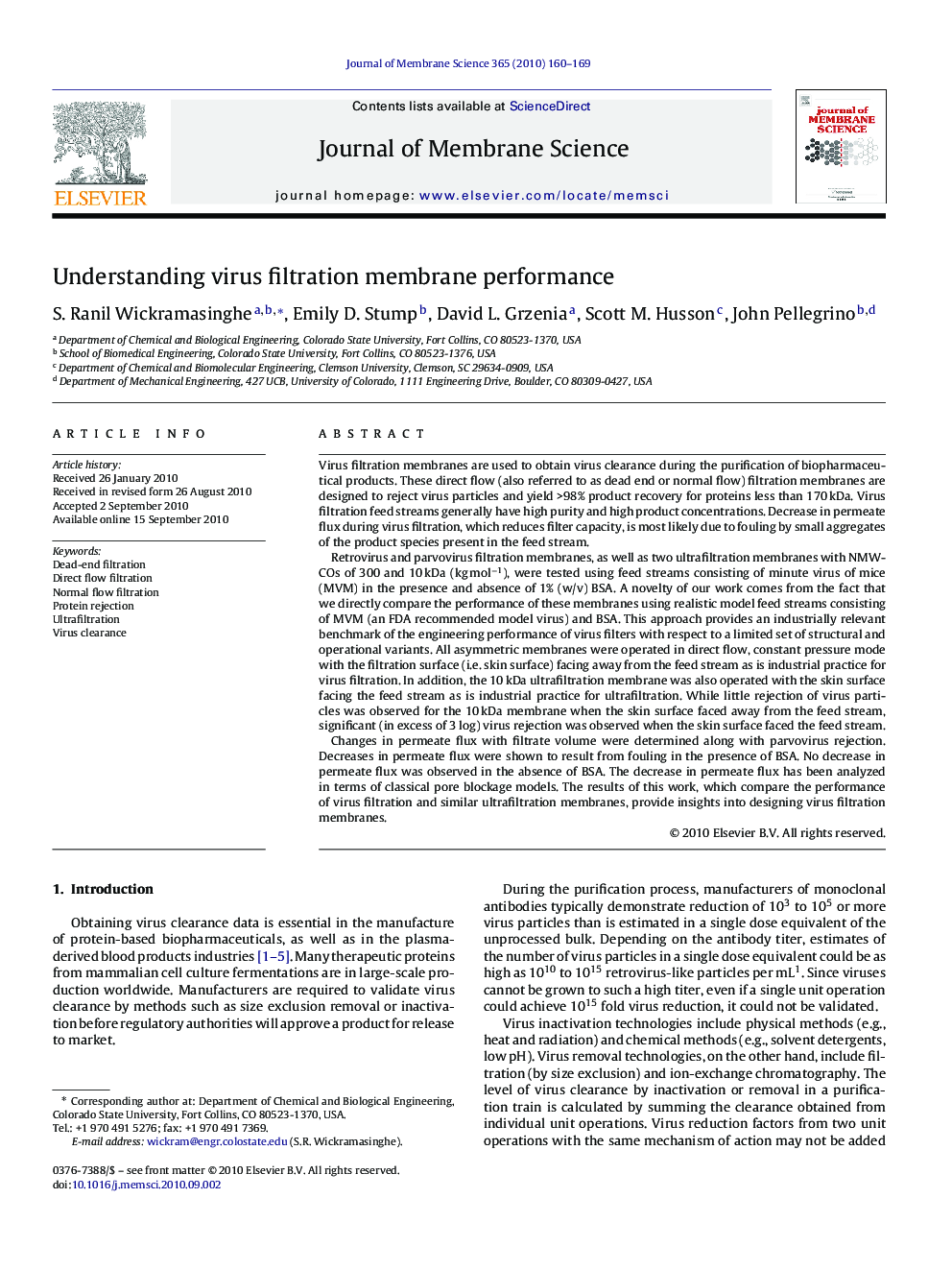| Article ID | Journal | Published Year | Pages | File Type |
|---|---|---|---|---|
| 636096 | Journal of Membrane Science | 2010 | 10 Pages |
Virus filtration membranes are used to obtain virus clearance during the purification of biopharmaceutical products. These direct flow (also referred to as dead end or normal flow) filtration membranes are designed to reject virus particles and yield >98% product recovery for proteins less than 170 kDa. Virus filtration feed streams generally have high purity and high product concentrations. Decrease in permeate flux during virus filtration, which reduces filter capacity, is most likely due to fouling by small aggregates of the product species present in the feed stream.Retrovirus and parvovirus filtration membranes, as well as two ultrafiltration membranes with NMWCOs of 300 and 10 kDa (kg mol−1), were tested using feed streams consisting of minute virus of mice (MVM) in the presence and absence of 1% (w/v) BSA. A novelty of our work comes from the fact that we directly compare the performance of these membranes using realistic model feed streams consisting of MVM (an FDA recommended model virus) and BSA. This approach provides an industrially relevant benchmark of the engineering performance of virus filters with respect to a limited set of structural and operational variants. All asymmetric membranes were operated in direct flow, constant pressure mode with the filtration surface (i.e. skin surface) facing away from the feed stream as is industrial practice for virus filtration. In addition, the 10 kDa ultrafiltration membrane was also operated with the skin surface facing the feed stream as is industrial practice for ultrafiltration. While little rejection of virus particles was observed for the 10 kDa membrane when the skin surface faced away from the feed stream, significant (in excess of 3 log) virus rejection was observed when the skin surface faced the feed stream.Changes in permeate flux with filtrate volume were determined along with parvovirus rejection. Decreases in permeate flux were shown to result from fouling in the presence of BSA. No decrease in permeate flux was observed in the absence of BSA. The decrease in permeate flux has been analyzed in terms of classical pore blockage models. The results of this work, which compare the performance of virus filtration and similar ultrafiltration membranes, provide insights into designing virus filtration membranes.
Research highlights▶ Tested virus filtration and similar ultrafiltration membranes. ▶ Compared performance of symmetric and asymmetric membranes. ▶ Illustrated virus filtration membranes maximize virus rejection and product passage. ▶ Proposed optimized virus filtration membrane morphology.
